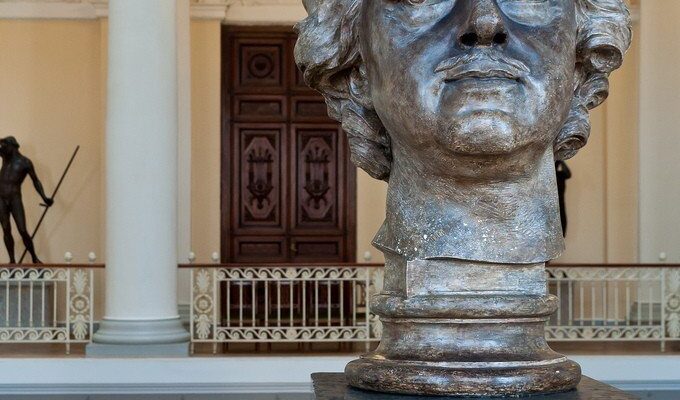State Russian Museum
The State Russian Museum – the magnificent building that now houses the Russian Museum was built for a very different purpose. It was a residential palace intended for Grand Duke Mikhail Pavlovich, the younger brother of Emperors Alexander I and Nicholas I, and was therefore called Mikhailovsky.
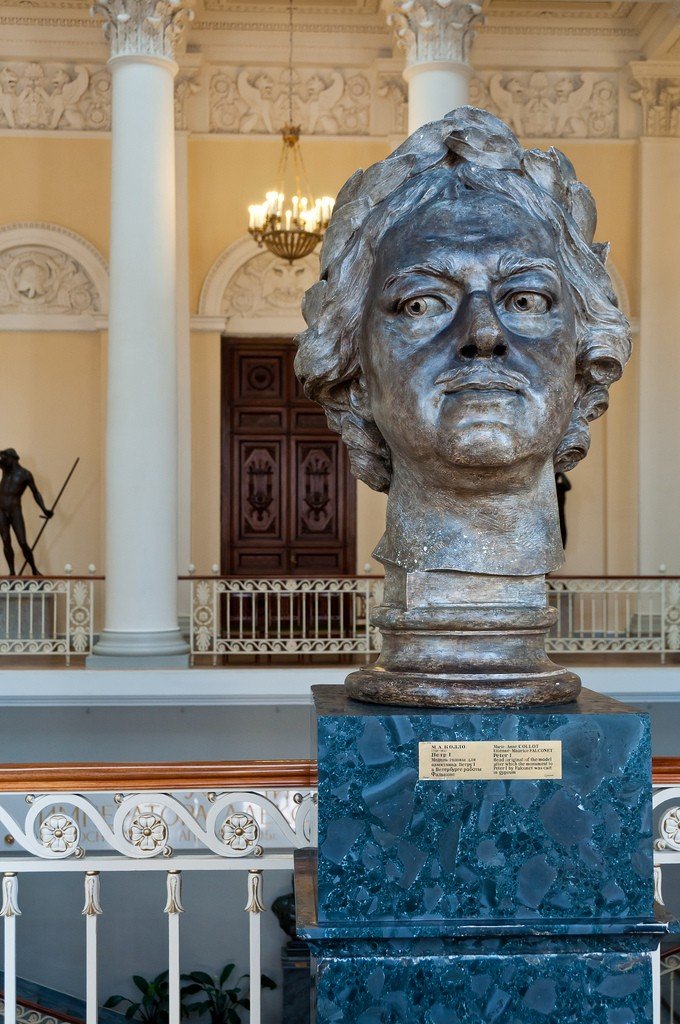
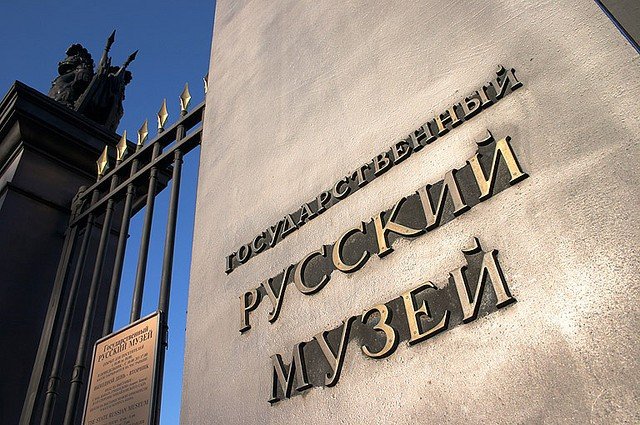
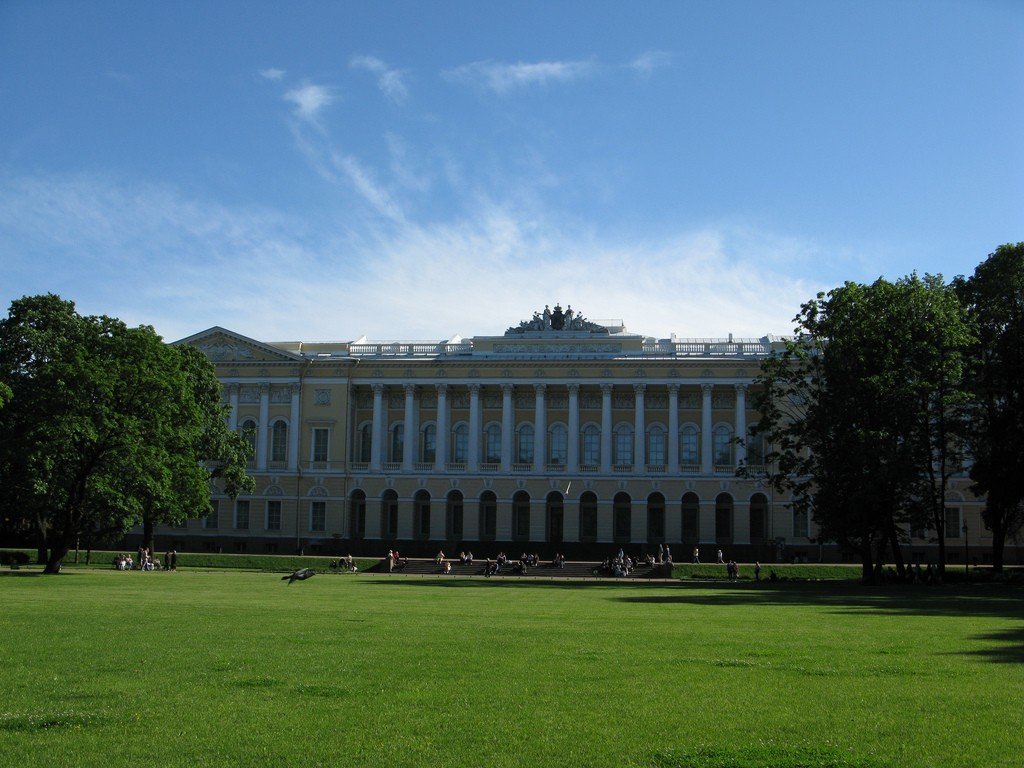
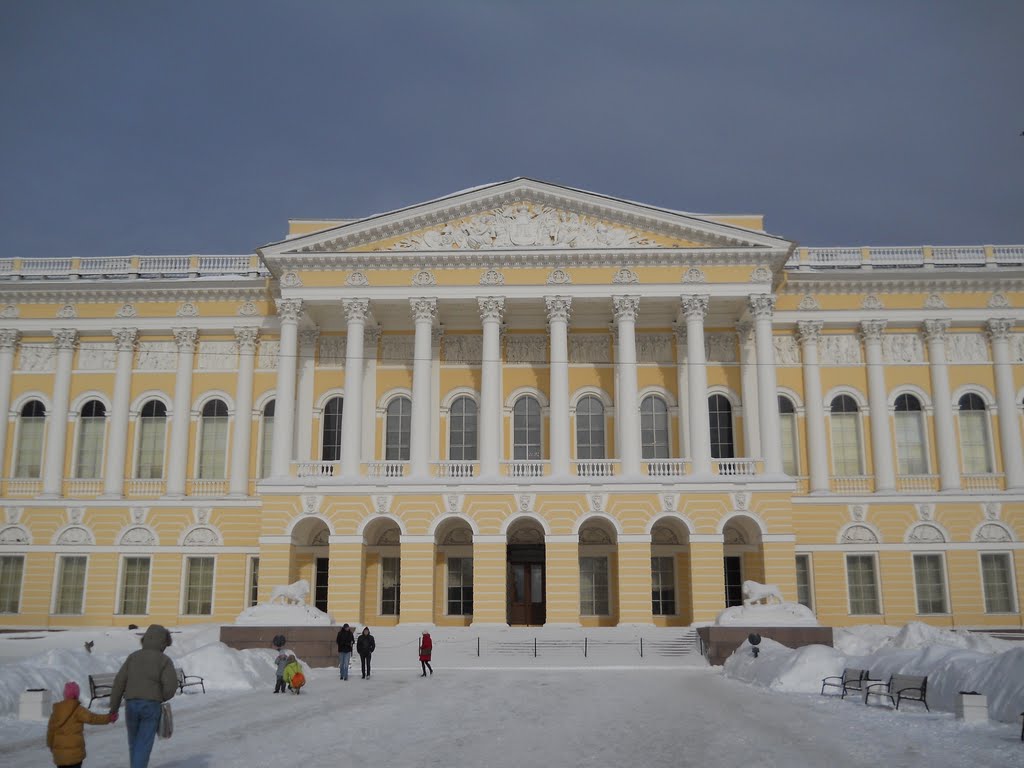
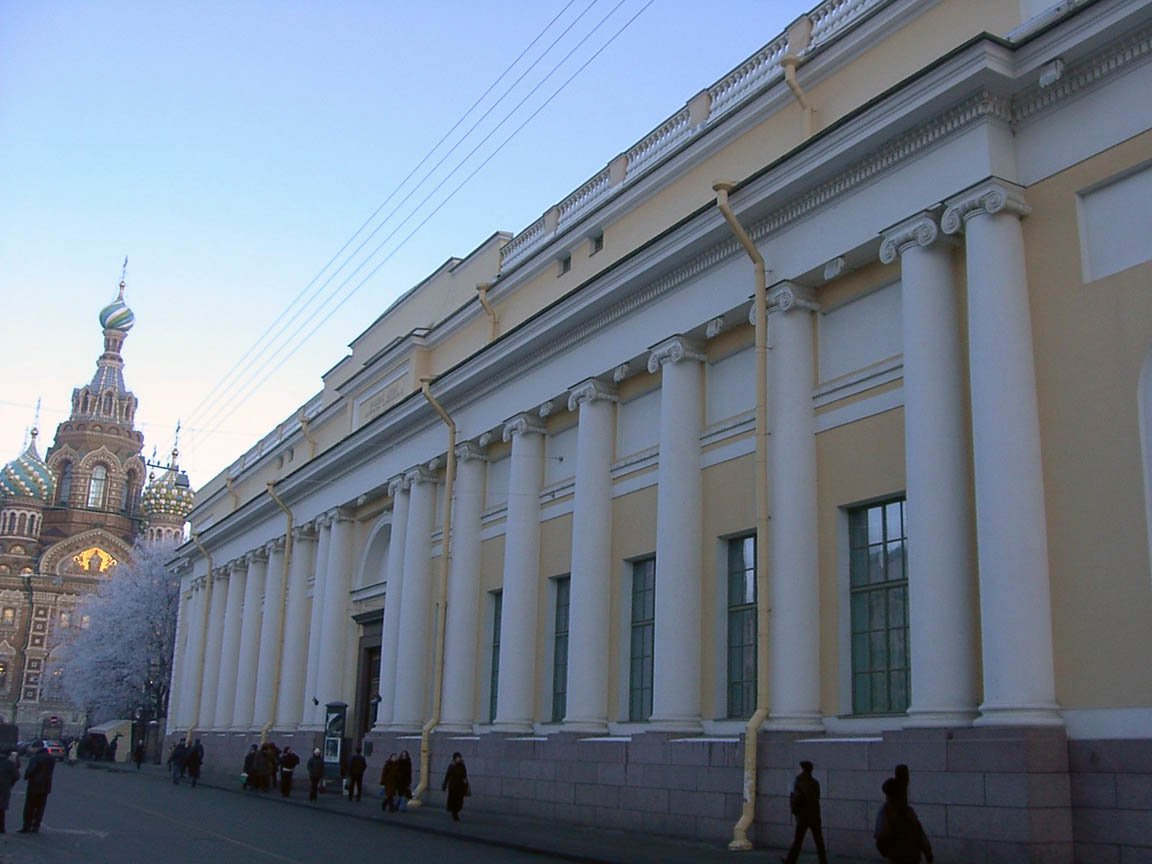
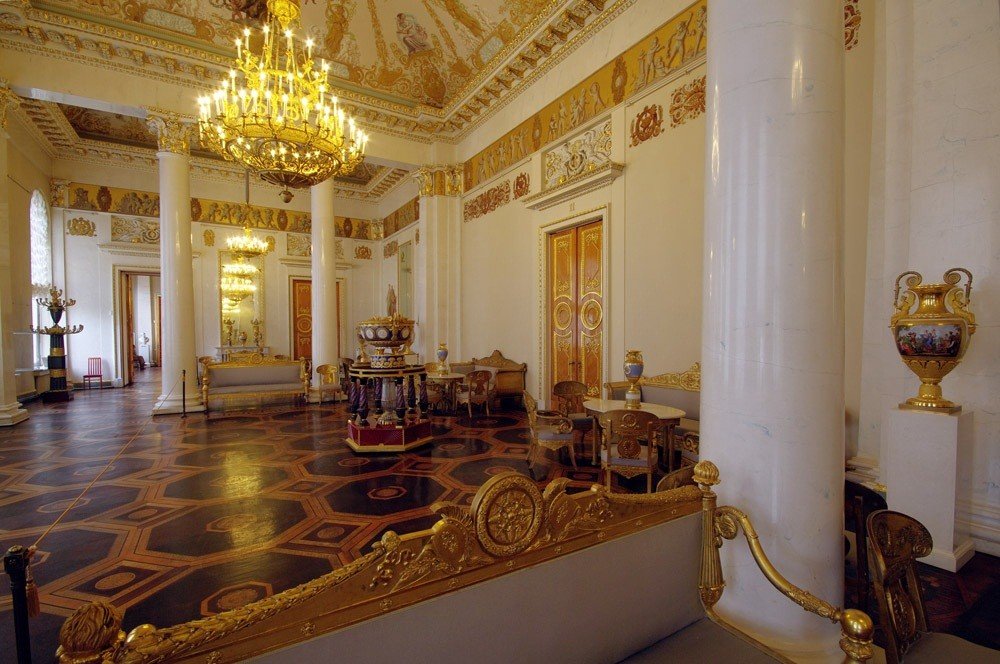
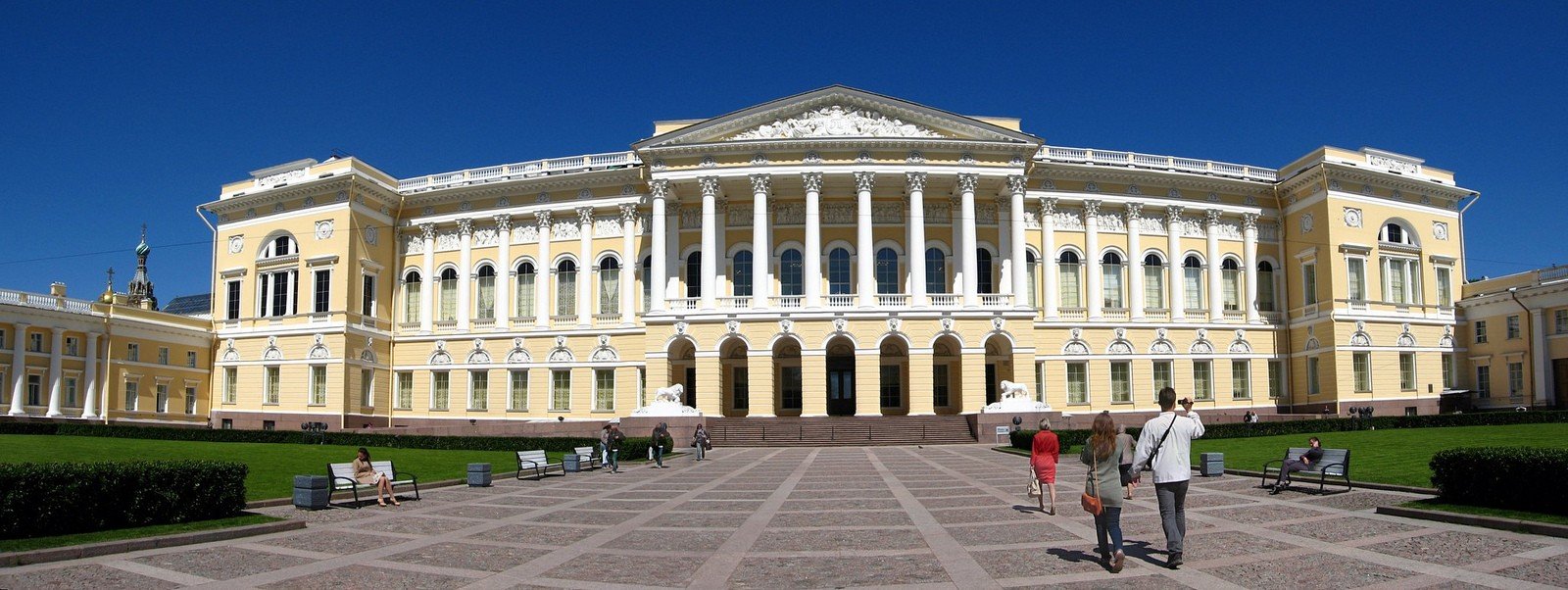

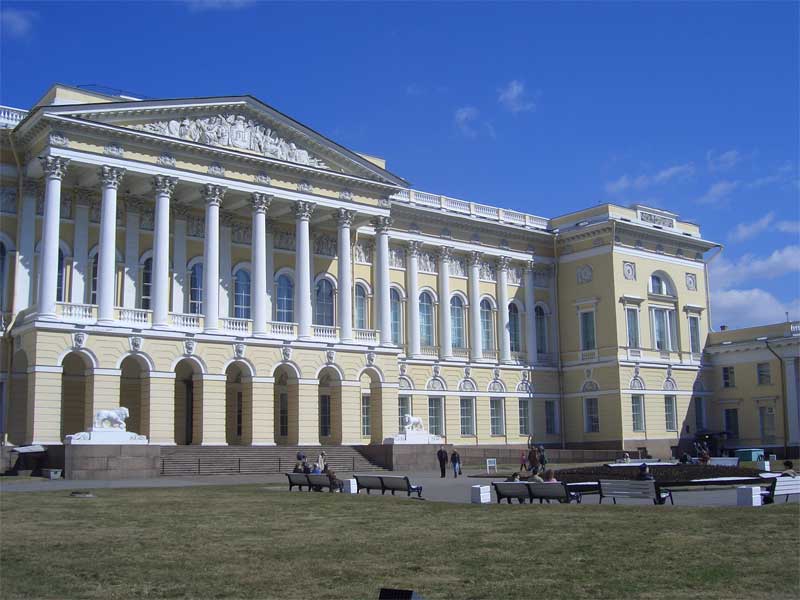
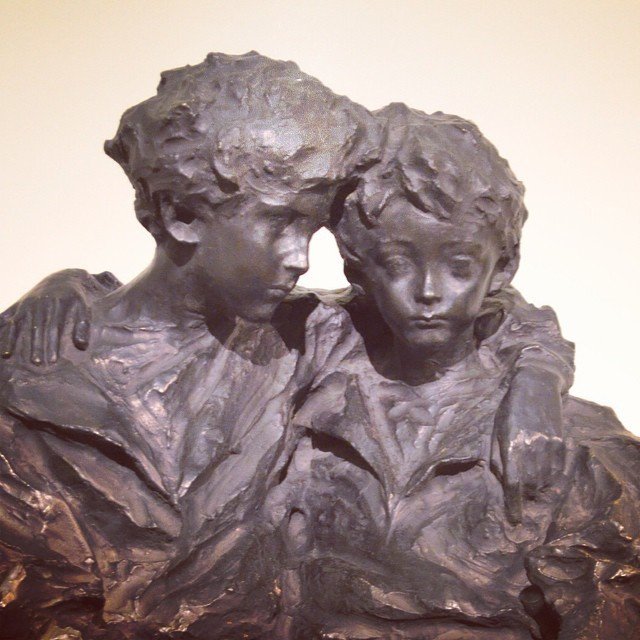
History
Mikhail Pavlovich was the last of the ten children of Paul I, and he did not have a chance to reign. Nevertheless, caring about the fate of his youngest son, the august father even at his birth ordered the accumulation of funds for the construction of his future own palace. In 1819, when he reached the age of majority, Mikhail Pavlovich took up the post of leadership of the Russian artillery and could think about marriage. At that time, by decree of his elder brother Alexander I, who was reigning at that time, the Mikhailovsky Palace was laid. It was erected by a remarkable master of his craft, the famous Italian architect Carl Rossi.
Soon Mikhail Pavlovich married a young Wurttemberg princess, who received the name Elena Pavlovna when she converted to Orthodoxy. At first the newlyweds settled in the Winter Palace, but in 1825 they moved to the newly completed Mikhailovsky Palace, which immediately became a new decoration of the capital. This palace, with its eight-column portico, is striking in its solemn majesty and refinement of classical proportions. The best artists and masters of applied arts of that time participated in its decoration. In front of the palace there is a front yard with a magnificent cast-iron fence.
.“This palace is certainly a triumph of the latest architecture – wrote the English scientist Grenville, who visited Russia – it is not only superior to everything seen in Tulieri and other royal palaces of the continent, but is positively the only one of its kind”. And the citizens of St. Petersburg responded as follows: “Well, indeed, the palace of Mikhail Pavlovich is marvelous, that is, as they say: neither to describe in pen nor in a fairy tale to tell. Richly, beautifully, with excellent taste and care everything is finished. Rossi himself here even more distinguished than in Yelagin Palace.”
Mikhailovsky Palace was for the Grand Duke, who held the post of inspector general of the engineering forces, both home and place of service. In the palace not only arranged noisy balls of high society, to which flowers were brought on two hundred carts, but also met committees, Mikhail Pavlovich received military and civilian persons, organized ceremonial receptions on the occasion of appointment to the post and production in the officers. Life in the palace was provided by a huge number of staff: in summer – up to 300, in winter – up to 600 people.
.
After the death of Mikhail Pavlovich, the palace passed to his widow Helena Pavlovna, a sophisticated patroness of tempers and mistress of an artistic and liberal political salon. Of the five daughters born to her, only one – Catherine Mikhailovna – survived to this time and inherited the palace after the death of her mother. She was married to the Duke of Mecklenburg-Strelitsky and bequeathed the palace to her children from this marriage. However, there was an inconsistency: Mikhailovsky Palace was the property of the House of Romanov, and the heirs were German subjects. Alexander III found it necessary to correct this situation, buying the palace in the treasury. The young Emperor Nicholas II realized what his father had planned. For 4 million rubles in silver, he bought the Mikhailovsky Palace with all its services and gave it to the Russian Museum of Emperor Alexander III established by him in 1895..
The palace was rebuilt by architect Svinyin for the museum. It was based on paintings from the tsar’s residences, the Hermitage, and the collection of the Academy of Arts. In 1916, to accommodate the growing collections, a western building (often called the Benois Building) overlooking the canal was erected next to the Mikhailovsky Palace, designed by the academician of architecture Benois. The palace and the Benois Building are connected by a passage that allows one to pass from one to the other without going into the street..
After the revolution, the Russian Museum was significantly enriched by nationalized art treasures and new acquisitions. Now its holdings include about 400 thousand works of painting, graphics, sculpture and decorative and applied art. Museum expositions cover all stages of Russian art – from Old Russian icons to modern avant-garde. Antique icons and pictorial and sculptural works of the XVIII-XIX centuries are presented in the Mikhailovsky Palace itself, and in the Benois building there are mainly works by masters of the XX century. Temporary exhibitions are often organized there as well.
.Excursion to the museum
The museum is entered through the basement, where the ticket office and checkrooms are located, and then go upstairs to the huge columned lobby. It is customary to begin the tour on the second floor, as the chronology of the exposition begins there. But before you plunge into the wonderful world of Old Russian icon painting, appreciate the magnificent front entrance hall and solemn staircase of the Mikhailovsky Palace. The feeling of height and spaciousness is breathtaking as you ascend this wide staircase branching into two flights to the second-floor gallery surrounded by eighteen grandiose Corinthian columns.
.
Once upstairs, turn left and you will find yourself in the department of art of the XII-XVIII centuries. At this time Russian painting was exclusively religious, so in the first four halls – only ancient icons. The oldest of them is considered to be “Angel Zlatye Vlasy”, painted in the XII century (located in the first hall near the window). It is impossible not to admire the majestic beauty of seemingly calm but temperamental lines, their elegance and purity.
.
The next hall presents the Novgorod icon painting school – bright, festive and very lucid. Be sure to pay attention to the icon of the early XIV century. “St. George with a hagiography”, in curious detail telling the legendary story of the life of the saint. The same very revered in Russia saint is depicted on a white horse on the brightest red background on another, small in size, but monumental in composition icon.
.
In the hall of the Moscow school are the masterpieces of the collection – large icons “St. Peter” and “St. Paul” from the iconostasis of the Assumption Cathedral in Vladimir. They were executed in the workshop of the famous master Andrei Rublev. The rhythmic composition, the repetition of soft, flowing lines make these images especially musical.
.
The fourth hall exhibits works by the famous icon painter Dionisy from the Cathedral of the Nativity of the Mother of God in the Ferapontov Monastery, striking with a combination of inexplicable lightness and clarity with solemnity and a kind of pathos. There are also late examples of the Moscow school, which becomes characterized by the drawing of small details and the predominance of red and gold colors.
.
Entering the next hall, we find ourselves in the Peter the Great era with its craving for secular art. Peter actively invited foreign artists to Russia and sent Russian young men to study painting abroad. Secular painting began in Russia with the genre of portraiture. The first experiments in this genre, still rather conventional, in which the icon-painting tradition was still felt, were called “parsuns” (“personages”). Petrov’s foreign boarders Ivan Nikitin and Andrei Matveev, whose works can be seen in this hall, were the first to master the European technique of painting. Ivan Nikitin later became famous as the greatest portraitist of the first quarter of the 18th century.
.
Among his famous works are “Portrait of the Floor Hetman”, “Portrait of Baron Stroganov”, the famous commissioned work “Peter the Great on his death bed.”
.In the next hall – painting of the second third of the XVIII century. There are well-known children’s portraits of the Fermor family by Ivan Vishnyakov, and expressive paintings by Alexei Antropov, for example, a large portrait of Peter III, the unloved husband of Catherine II.
.We then enter a corner hall, admired for its gilded ceiling and amazed by the huge bronze statue standing in the middle. This sculptural portrait of the Empress Anna Ioannovna with an arapchonka was made by the sculptor Rastrelli, the father of the famous architect.
>
Passing through the hall of the famous portraitist Fyodor Rokotov (among his paintings we should note “Portrait of Grand Duke Pavel Petrovich as a child”, “Portrait of Countess Santi”, portraits of the Surovtsev couple), we get to the exposition, where the works of artists – graduates of the Academy of Arts created by Elizabeth Petrovna in 1757 – are presented. There is an interesting painting by the Ukrainian artist Anton Losenko on a Russian historical subject “Vladimir and Rogneda”. This artist is considered to be the founder of Russian historical painting.
Next we are waiting for the era of Catherine the Great – sculptural (by Fyodor Shubin) and pictorial portraits of the Empress and the most famous cycle of seven portraits of graduates of the Smolny Institute for Noble Maidens, founded by her, created by Dmitry Levitsky.
.Then, as if a miracle happens – from the museum halls we are transported to the era of Grand Duke Mikhail Pavlovich, getting into the White Hall, untouched by alterations, striking in size and perfection. Rossi’s original decoration and authentic furniture made according to his sketches are still preserved here. The spacious hall, overlooking the Mikhailovsky Garden, is illuminated by bronze gilded chandeliers that softly illuminate the richly colored paintings of the plafonds. The smooth artificial marble on the walls and columns glistens, the waxed parquet glistens, the carved gilt furniture arranged in strict order completes the luxurious decoration. It seems that the door is about to open and the owners of the house and guests will enter. After all, this is where the Grand Duchess Elena Pavlovna gathered capital and visiting celebrities, public figures and politicians, musicians and composers, scientists, writers…
.
Then through the hall of portraitist Borovikovsky we get to one of the largest and most famous halls of the museum, where the stunning seascapes of Aivazovsky (this is where the textbook “The Ninth Shaft” is located) argue in perfection with the magnificent portraits of Karl Bryullov. Here, too, is Brullov’s most famous painting, which opened a new page in the history of Russian art – “The Last Day of Pompeii.”
None of the European artists of the XIX century. was not honored with such a grandiose triumph, which fell to the share of the young painter Karl Bryullov, when in mid-1833, he opened the doors of his Roman studio for viewers with just completed painting “The Last Day of Pompeii”. Never had the fame of Russian art spread so widely throughout Europe. Having made a real furor in Rome, Milan and Paris, the painting by Bryullov finally reached St. Petersburg, where it immediately became the center of attention of Russian society and became an object of patriotic pride. “Crowds of visitors, you might say, burst into the halls of the Academy to look at ‘Pompeia’,” a contemporary narrates. In its official annual report, the Academy of Arts recognized Brullovskoy picture of the best creation of the XIX century. Famous representatives of Russian culture enthusiastically welcomed the picture, praised her in poetry and prose. Gogol wrote an extensive article in which he recognized this painting as “a complete universal creation” where everything is “so powerful, so bold, so harmonious brought together in one, as only it could arise in the head of the genius of the universal.”
.The theme of the painting is taken from ancient Roman history. Pompeii, an ancient Roman city located at the foot of Vesuvius, was flooded with lava and covered with rocks and ash in 79 AD as a result of a violent volcanic eruption. Thousands of inhabitants died in the streets of the city while fleeing in panic. In the painting, Bryullov contrasts the destructive elements of nature with the soulful greatness and beauty of man.
.
“His figures are beautiful for all the horror of their situation. They drown it out with their beauty,” wrote Gogol, who subtly summarized the main idea of Brullov’s painting..
This painting can be viewed for a long time, noticing more and more details. Here is the prostrate figure of a young woman, crushed in the fall from the chariot. Here are two young pompeyaninov carry on their shoulders sick old man-father. Here are newlyweds – a young man-husband supports his wife falling in exhaustion with a marriage wreath on her head. Here is the son (his image implies the Roman writer Pliny the Younger, an eyewitness to the tragedy) trying to save the old mother. In the painting there is a pagan priest and a Christian priest, as if personifying the passing of the ancient world and the emerging Christian civilization on its ruins. If you look closely, you can see a self-portrait of Bryullov, who depicted himself as a Pompeian artist who, fleeing from the city, takes with him a box of brushes and paints. And in the image of a mother clutching her daughters, the painter immortalized the woman with whom he was in love – the famous socialite Countess Julia Samoilova. Her portrait with her pupil hangs at the door to the next hall.
.
Then we get to another proscenium (as they call large halls with glass ceilings), where works by academy artists are exhibited, such as the giant “Copper Serpent” by Fyodor Bruni or “Apparition of Christ to the People” by Alexander Ivanov – a sketch for a painting that is in the Tretyakov Gallery. Next we will see Italian landscapes by Sylvester Shchedrin, peasant genre paintings by Alexei Venetsianov, works by his talented pupil – serf painter Grigory Soroka. And now, having completed the circle, we are back on the grand staircase.
.Now let’s go down to the first floor. Once there were offices and lived palace servants. Now there is art of the second half of the XIX century. Let’s walk through the halls of the first floor. Pavel Fedotov’s legacy is represented by versions of two famous paintings by the artist – “The Major’s Matchmaking” and “The Widow Girl”, as well as a number of miniature portraits. The museum has a wonderful collection of artists-peredvizhniki: genre paintings by Vasily Perov, a passionate denouncer of social contrasts, psychological portraits by Ivan Kramskoi, Nikolai Ge’s painting “Peter the Great Interrogates Tsarevich Alexei”, known from history textbooks. There are also many magnificent landscapes – “Ship Grove” by Ivan Shishkin, “Winter” by Alexei Savrasov, “Thaw” by Fyodor Vasilyev, “Moonlight Night on the Dnieper” by Arkhip Kuindzhi with a fantastic effect of night lighting.
.The first floor has its own large paintings, striking not only for their size, but also for their masterful execution – for example, filled with light and bright colors “Frina at the Feast of Poseidon in Eleusinus” by Henrik Semiradsky or the canvas “Christ and the Sinful Woman” by Vasily Polenov flooded with the Palestinian sun. By the way, the latter painting has an interesting optical effect. The donkey, located in the right corner of the painting, is painted in such a way that no matter where the viewer moves, he is always looking directly at him.
.
Four halls are occupied by the works of Ilya Repin. A master of great creative temperament, he worked in different genres – here and the famous “Burlaki on the Volga”, and “Cossacks writing a letter to the Turkish Sultan”, and monumental, occupying the whole room canvas “Solemn meeting of the State Council”, and numerous portraits (critic Stasov, composer Glazunov, surgeon Pirogov, painter Shishkin, etc.).
.The creativity of Vasily Surikov, then the main historical painter of Russia, is reflected by the works of the middle and late period – “The Taking of the Snow Town”, “The Conquest of Siberia by Ermak”, “Suvorov’s Crossing of the Alps” and “Stepan Razin”. Nearby are fairy-tale-historical paintings by Viktor Vasnetsov. Here and all familiar from childhood years “Knight at the Crossroads.”
.Following the signs with the inscription “To the Benois Building”, we will pass through the passage to this annex to the Mikhailovsky Palace and go up to the second floor, where the art of the turn of the XIX-XX centuries awaits us. The atmosphere here is completely different – there is no luxury of palace halls, and the paintings are completely different. The fantastic worlds of Mikhail Vrubel contrast with the calm, full of the idea of harmony of man, nature and Orthodox faith paintings by Mikhail Nesterov, the first attempts of Russian impressionist Konstantin Korovin – with the philosophical paintings of “the greatest intuitionist of the century” (as defined by Gorky) Nikolai Roerich.
.Two halls are occupied by works by Valentin Serov – these are portraits (Princess Orlova, Ida Rubinstein, a series of works dedicated to the family of Princes Yusupov), landscapes, historical paintings (“Peter II and Tsesarevna Elizabeth on a hound hunt”), sketches of scenery for the production of the opera “Judith.”
.Artists of the association “World of Art” drew inspiration from the romantic cult of the past – some in folk art, fairy tales, the history of pre-Petrine Russia, others – in “Europeanism”, the rocaille-classicist century of the French Enlightenment. This is clearly visible in the paintings of Alexander Benois, Konstantin Somov, Leon Bakst, Mstislav Dobuzhinsky.
.The modernist cult of exquisitely theatricalized, “out-of-place” beauty sharply separated the Miriskusniki from the nascent Russian avant-garde, less elegiac and contemplative and open not to the past, but to the present and the future. The Russian Museum has a unique collection including works by avant-garde classics such as the objectless compositions of Wassily Kandinsky, the suprematist paintings of Kazimir Malevich, and the analytical painting of Pavel Filonov.
.The Benois Building is constantly organizing interesting temporary exhibitions. This usually takes place on its first floor and in part of the halls of the second floor. The Benois Building has its own entrance from the Griboedov Canal, so you can get there directly, bypassing the Mikhailovsky Palace..
Visitors
- Address: 4 Inzhenernaya St., “Nevsky Prospekt” .
- Telephone number for inquiries 595-42-48, answering machine 314-83-68.
- Open daily, except Tues, from 10.00 to 18.00, on stumps on pre-holidays until 17.00. The ticket office closes an hour earlier. .
- Entrance – 200r., preferential (Russian schoolchildren and pensioners) – 50 p., Russian preschoolers and students – free of charge. For foreigners -350 p., foreign children and students – 150 p.
